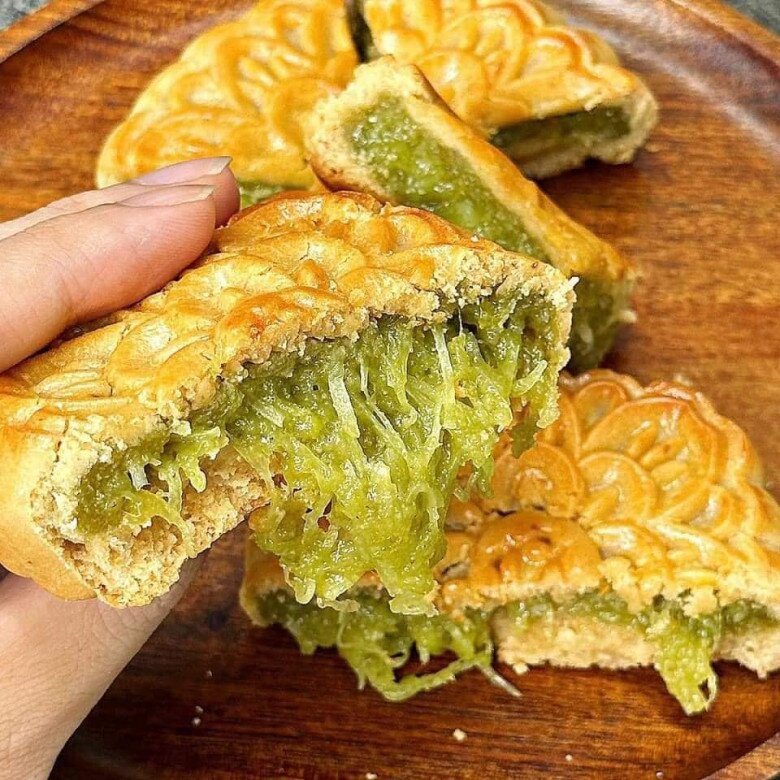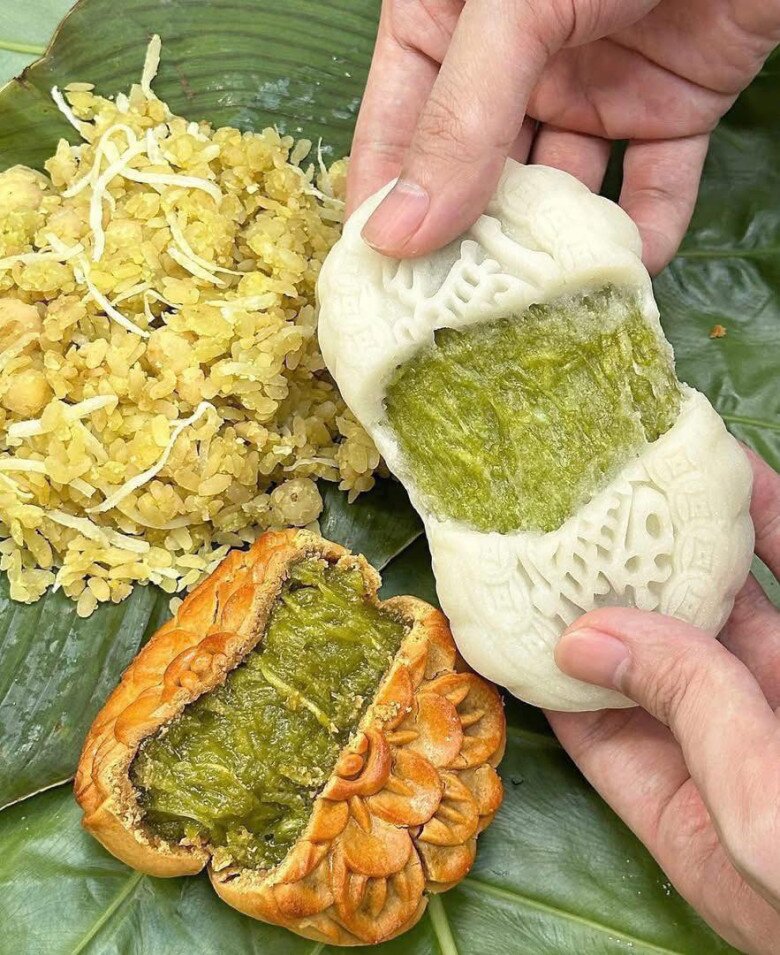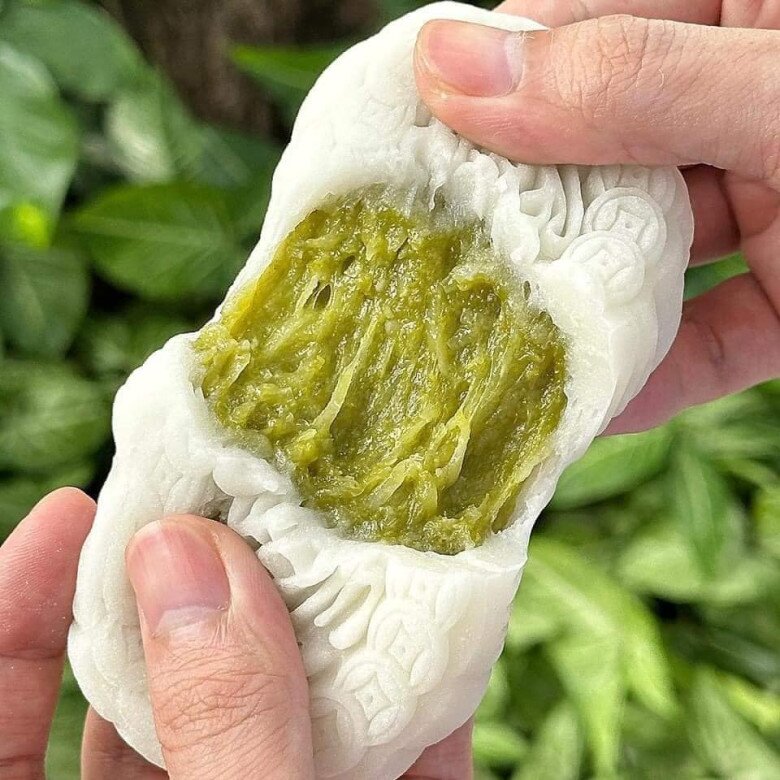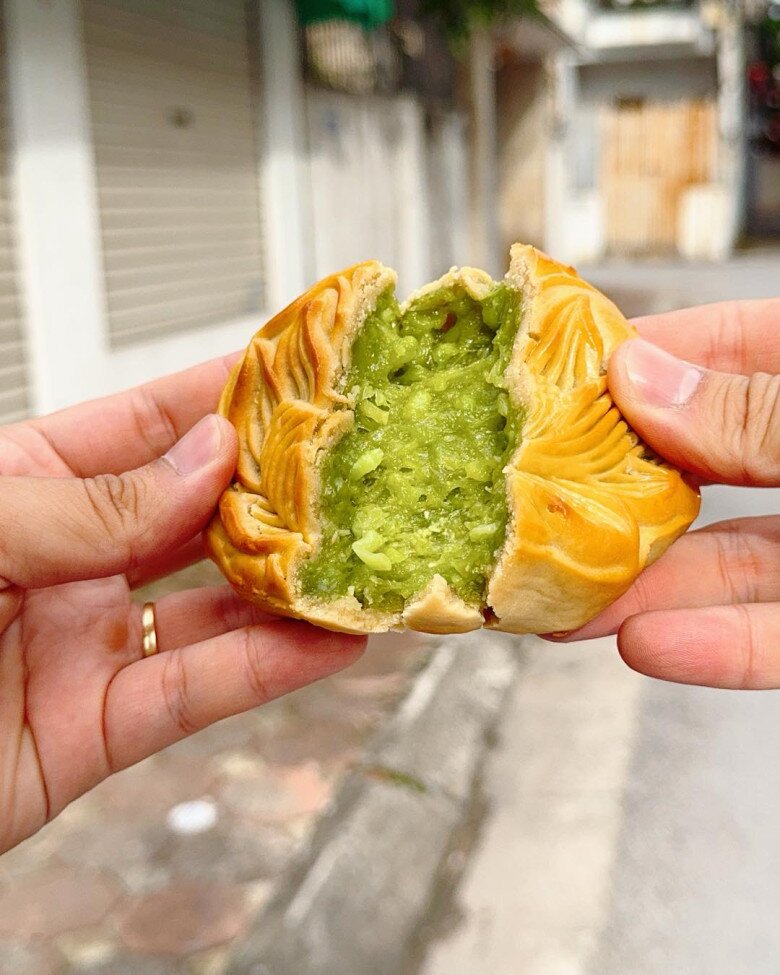
The unique appeal of roasted young rice cakes lies in their filling. The main ingredient is fresh young rice—a quintessential Hanoi delicacy during autumn—carefully selected, cleaned, and simmered with grated coconut. This blend creates a soft, chewy filling that’s both rich and refreshingly fragrant, capturing the essence of young rice.
Unlike other mooncake fillings that can be overly sweet, the young rice filling offers a balanced harmony: chewy, rich, yet not cloying. Its subtle sweetness, enhanced by the aroma of pandan leaves and the freshness of young rice, creates an elegant and refined taste. Some describe it as “buttery and chewy like cream, yet infused with the rustic charm of rural fields,” offering a distinctly Asian experience. Each bite leaves a refreshing sensation, akin to the freshness of grass after rain.

Crafting the perfect young rice filling requires meticulous attention to detail, from ingredient selection to preparation. The basic recipe includes: fresh young rice, long-strand grated coconut, sugar, coconut milk, pandan leaf extract (15g pandan leaves blended with 150g water, then strained), cooking oil, glutinous rice flour, and optional pandan essence for color.
First, the grated coconut is marinated in sugar for 30 minutes until translucent. All ingredients (except glutinous rice flour) are mixed, rested for 15 minutes, then stir-fried over medium heat. Once the mixture softens and binds into a chewy mass, it’s removed from heat, cooled, and combined with glutinous rice flour. The finished filling is wrapped, chilled for 2 hours, and then ready for use.

In shaping the cake, the filling-to-crust ratio is crucial. For young rice cakes, a 1:1 ratio ensures balance and stability. For instance, a 150g cake typically contains 80g filling and 70g crust. The crust is made from 240g all-purpose flour, 160g sugar syrup, one egg yolk, and 30g cooking oil. Before baking, the surface is brushed with a mixture of egg yolk, fresh milk, and oil for a golden finish.
Many note that young rice cakes offer a unique experience compared to traditional fillings like mixed nuts, mung bean, or lotus seed. The filling’s extreme softness sometimes results in less-than-perfect shapes, but this very characteristic captivates those who cherish the natural flavor of young rice.

Some enthusiasts call this cake their “true love” for Mid-Autumn Festival, especially those fond of Hanoi’s young rice. The chewy, fragrant filling blends perfectly with the texture of coconut, offering a refreshingly sweet experience. Though its softness challenges perfect shaping, its flavor wins over even the most discerning palates.
Beyond baked cakes, the young rice filling is also used in glutinous rice cakes, creating a novel yet familiar flavor that caters to diverse tastes.

Widely available on social media, online shops, and bakeries in Hanoi and Ho Chi Minh City, these cakes range from 70,000 to 90,000 VND each, depending on size, ingredients, and additions like salted egg yolk. Compared to premium mooncakes, this price is reasonable, even competitive.
Online sales have broadened its reach, especially among young trend-seekers. On food forums, images of pale green, glossy young rice cakes garner thousands of comments and shares.
The cake’s appeal is deeply tied to Hanoi’s young rice—a culinary gem of the capital’s autumn. Young rice symbolizes traditional villages like Vòng. Innovating mooncakes with young rice not only boosts commerce but also enriches Vietnamese culinary culture.
Thus, roasted young rice cakes are more than a trend; they’ve carved a unique place in consumers’ hearts. Each cake blends tradition and innovation, preserving Hanoi’s young rice essence while appealing to modern tastes.
Over three Mid-Autumn seasons since 2022, these cakes remain a sensation. Their enduring popularity proves they’re no fleeting fad. With their rich, fragrant filling, they evoke Hanoi’s autumn charm, seamlessly merging tradition with creativity to become a new Mid-Autumn icon.
Today, social media buzzes with offers priced at 70,000–90,000 VND per cake. Consumer interest underscores their lasting appeal. This Mid-Autumn, young rice cakes reaffirm their status as a Vietnamese culinary star.






























